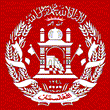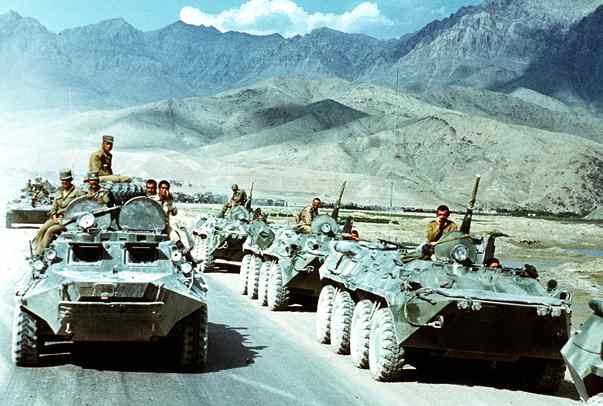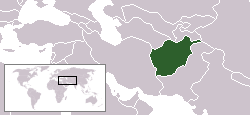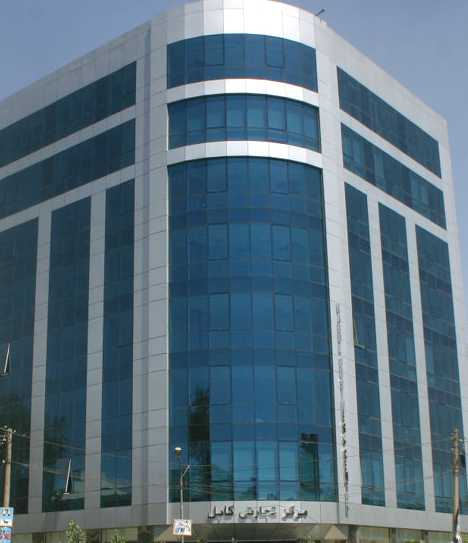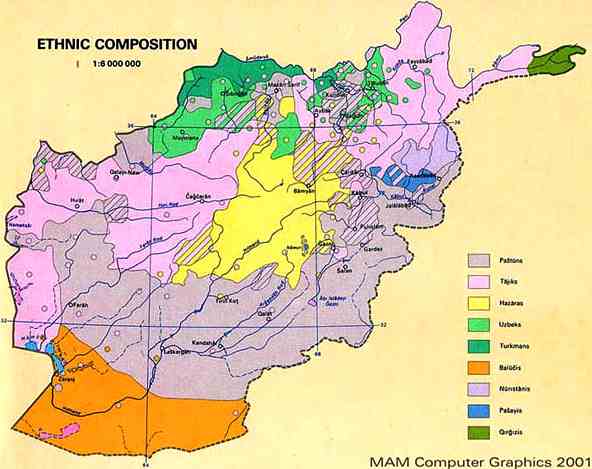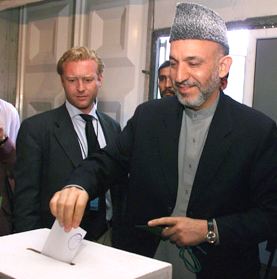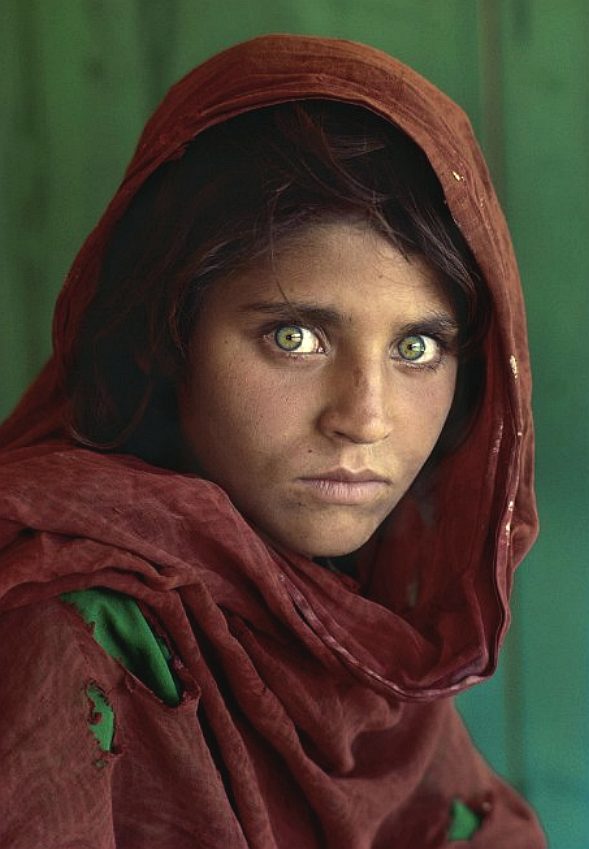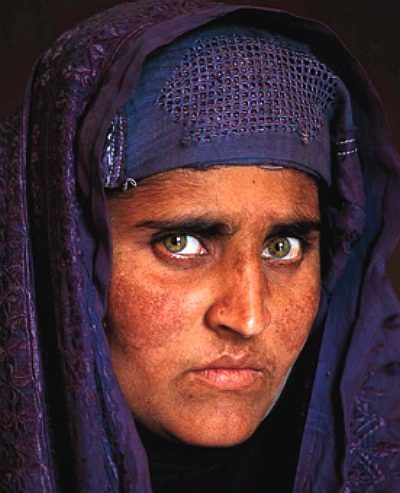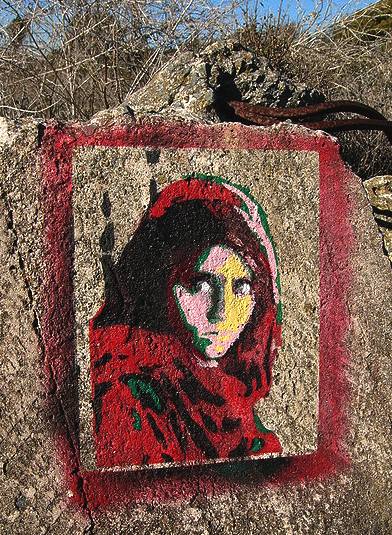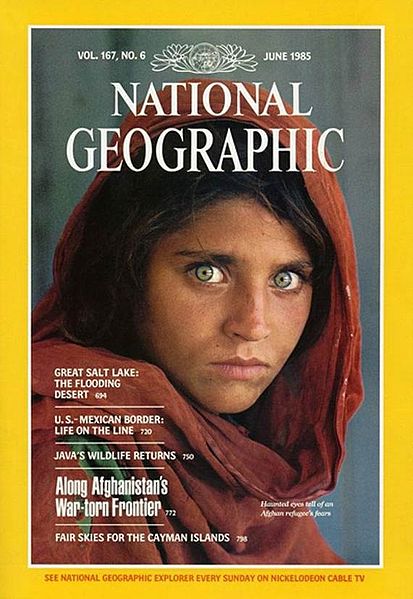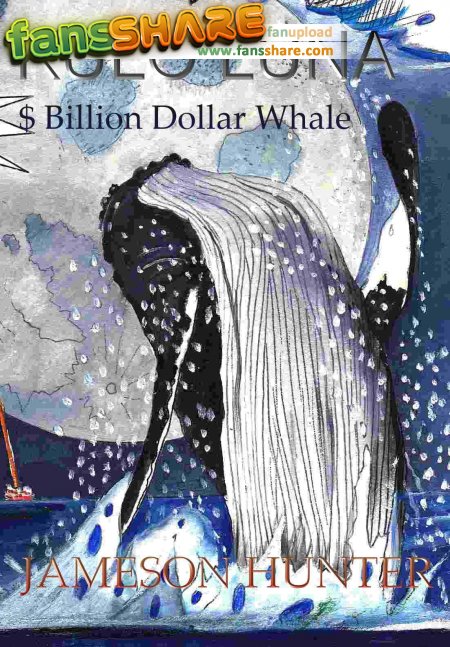|
AFGHANISTAN
|
|||||||||||
|
Afghānistān, officially the Islamic Republic of Afghanistan (Pashto: د افغانستان اسلامي جمهوریت, Persian: جمهوری اسلامی افغانستان,Turkish:Afganistan), is a landlocked country at the crossroads of Asia and the Middle East. Generally considered a part of Central Asia, it is sometimes ascribed to a regional bloc in either South Asia or even perhaps the Middle East as it has cultural, ethno-linguistic, and geographic links with most of its neighbours. It is largely bordered by Pakistan in the south and east, Iran in the west, Turkmenistan, Uzbekistan and Tajikistan in the north, and the People's Republic of China in the far east. The name Afghanistan means "Land of the Afghans".
Afghanistan is a mosaic of ethnic groups and cultures, and a crossroads between east and west. An ancient land that has often been plundered and also a focal point of trade. The region of present-day Afghanistan has seen many invading forces come and go, including Persians, Greeks, Arabs, Turks, Mongols, British and Soviets. Afghanistan was created in 1747 as a large empire, its modern-day shape was recognized by the international community as a fully independent state in 1919, when foreign intervention ceased following the Anglo-Afghan wars. Since 1979, the country has suffered almost continuous conflict, beginning with the Soviet invasion followed by civil war and finally by the 2001 US war on terror, in which the ruling Taliban regime was toppled. In December 2001, the United Nations Security Council authorized the creation of an International Security Assistance Force. This force, composed of US and NATO troops is assisting the government of President Hamid Karzai in establishing authority across the country.
Name
The name Afghānistān literally translates to Land of the Afghans. Its modern usage derives from the word Afghan. The Pashtuns began using the term Afghan as a name for themselves from the Islamic period onwards. According to W.K. Frazier Tyler, M.C. Gillet and several other scholars, "The word Afghan first appears in history in the Hudud-al-Alam in 982 AD." The last part of the name Afghānistān (-istān) originates from the Persian word stān (country or land). The English word Afghanland that appeared in various treaties between Qajar Dynasty and the United Kingdom dealing with the lands between Iran and British Raj inhabited by Pashtun tribes (modern Southeastern Afghanistan) was adopted by Afghan officials and became Afghanistan.
However, Afghanistan was pronounced by its current name in 18th century when Ahmad Shah Durrani formed the new government based on Pashtun rule, and was officially named as Afghanistan during the ruling of Abdur Rahman Khan. Before the 18th century, the region of present-day Afghanistan was known as a province of Greater Iran called Khorasan.
Soviet troops withdrawing from Afghanistan in 1988
The Encyclopaedia of Islam states:
Afghānistān has borne that name only since the middle of the 18th century, when the supremacy of the Afghan race (Pashtuns) became assured: previously various districts bore distinct apellations, but the country was not a definite political unit, and its component parts were not bound together by any identity of race or language. The earlier meaning of the word was simply “the land of the Afghans”, a limited territory which did not include many parts of the present state but did comprise large districts now either independent or within the boundary of Pakistan. History
Excavation of prehistoric sites suggests that early humans lived in Afghanistan at least 50,000 years ago, and that farming communities in Afghanistan were among the earliest in the world.
Afghanistan exists at a unique nexus point where numerous Eurasian civilizations have interacted and often fought, and was an important site of early historical activity. Through the ages, the Hindu Kush has been home to the Aryans (Indo-Europeans: Indo-Aryans, Persians, Medes, Parthians, etc.). It also has been invaded by a host of people, including the Greeks, Mauryans, Kushans, Hepthalites, Arabs, Mongols, Turks, British, Soviets, and most recently by the Americans. On other occasions, native Afghan entities have invaded surrounding regions to form empires of their own.
Between 2000 and 1200 BC, waves of Indo-European-speaking Aryans are thought to have flooded into this part of Asia which now consists of modern-day Afghanistan, Iran, Turkmenistan, Uzbekistan,Tajikistan, Pakistan and others, setting up a nation that during the rule of Medes and the Persian Empire became known as Aryānām Xšaθra or Airyānem Vāejah. Later, during the rule of Ashkanian, Sasanian and after, it was called Erānshahr ايرانشهر (Irānshæhr) meaning "Dominion of the Aryans", which included large parts of Mesopotamia, the Caucasus, Armenia, Azerbaijan, Iran and modern-day Central Asia (Afghanistan, Turkmenistan, Uzbekistan, Tajikistan, the western part of Pakistan, etc.).
Afghanistan
world location map
Geography
Afghanistan is a land-locked, mountainous, central Asian country, with plains in the north and southwest. The highest point, at 7485 m (24,557 ft) above sea level, is Nowshak. Large parts of the country are dry, and fresh water supplies are limited. Afghanistan has a continental climate, with hot summers and cold winters. The country is frequently subject to earthquakes.
At 249,984 mi² (647,500 km²), Afghanistan is the world's 41st-largest country (after Burma). It is comparable in size to Somalia, and is somewhat smaller than the US state of Texas.
The country's natural resources include copper, zinc and iron ore in central areas; precious and semi-precious stones such as lapis, emerald and azure in the north-east and east; and potentially significant oil and gas reserves in the north. However, these significant mineral and energy resources remain largely untapped due to the effects of the Soviet invasion and the subsequent civil war.
Business Center in Kabul
Economy
Afghanistan is an extremely impoverished country, one of the world's poorest and least developed nations. Two-thirds of the population lives on less than US$2 a day. The economy has suffered greatly from the recent political and military unrest since the 1979-80 Soviet invasion and subsequent conflicts, while severe drought added to the nation's difficulties in 1998-2001.
The economically active population in 2002 was about 11 million (out of a total of an estimated 29 million). While there are no official unemployment rate estimates available, it is evident that it is high. The number of non-skilled young people is estimated at 3 million, which is likely to increase by some 300,000 per annum.
As much as one-third of Afghanistan's GDP comes from growing poppy and illicit drugs including opium and its two derivatives, morphine and heroin, as well as hashish production.
On a positive note, international efforts to rebuild Afghanistan led to the formation of the Afghan Interim Authority (AIA) as a result of the December 2001 Bonn Agreement, and later addressed at the Tokyo Donors Conference for Afghan Reconstruction in January 2002, where $4.5 billion was committed in a trust fund to be administered by the World Bank Group. Priority areas for reconstruction include the rebuilding of the educational system, health, and sanitation facilities, enhancement of administrative capacity, the development of the agricultural sector, and the rebuilding of road, energy, and telecommunication links.
Map
showing distribution of ethnic groups in Afghanistan
DemographicsThe population of Afghanistan is divided into a wide variety of ethnic groups. Because a systematic census has not been held in the country in decades, exact figures about the size and composition of the various ethnic groups are not available. Therefore most figures are approximations only. According to the CIA World Factbook, an approximate ethnic group distribution is as follows:
Languages
The CIA factbook on languages spoken in Afghanistan is as follows: Pashto 35% (in gray) and Persian (Dari) 50% (in pink), both Indo-European languages from the Iranian languages sub-family. Others include Turkic languages (primarily Uzbek and Turkmen) 9% (in green), as well as 30 minor languages 4% (primarily Balochi (in orange) and Pashai (in blue) and Nuristasni (in purple). Bilingualism is common.
Religions
Religiously, Afghans are over 99% Muslim (approximately 80% Sunni and 19% Shi'a). Other religions in Afghanistan include Zoroastrianism, Sikhism, and Hinduism. Afghanistan was once home to an ancient Jewish community, numbering approximately 5,000 in 1948. Most Jewish families fled the country after the 1979 Soviet invasion, and only one individual, Zablon Simintov, remains today. With the fall of the Taliban, a number of Sikhs have returned to the Ghazni, Nangarhar, Kandahar and Kabul provinces of Afghanistan.
Largest cities
The only city in Afghanistan with over one million residents is its capital, Kabul. The other major cities in the country are, in order of population size, Kandahar, Herat, Mazar-e Sharif, Jalalabad, and Kunduz.
President Hamid Karzai casting his vote at the 2004 Presidential elections
AFGHAN GIRL - IDENTIFIED
In
1984 Sharbat Gula was a student in an informal school, her parents had been killed and she was living in a refugee camp in Pakistan. The girl’s haunted, intense
green eyes seemed to symbolize the suffering of the Afghan
people and made the picture shown on this page below internationally famous. McCurry, rarely given the opportunity to photograph Afghan women, seized the opportunity and captured her image. She made it on the cover of National Geographic, her identity was
only discovered in 1992.
Sharbat Gula as a young refugee
Sharbat Gula painted by Martin House (click on the thumbnail)
HISTORY
Sharbat Gula (born ca. 1972) is an Afghan woman who was the subject of a famous photograph by journalist Steve McCurry. Gula was living as a refugee in Pakistan during the time of the Soviet occupation of Afghanistan when she was photographed. The image brought her recognition when it was featured on the cover of the June 1985 issue of National Geographic Magazine at a time when she was approximately 12 years old. Gula was known throughout the world simply as "the Afghan Girl" until she was formally identified in early 2002. The photograph has been likened to Leonardo da Vinci's painting of the Mona Lisa and is sometimes popularly referred to as "the Afghan Mona Lisa".
Pashtun by ethnicity, Gula was orphaned during the Soviet Union's bombing of Afghanistan and sent to the Nasir Bagh refugee camp in Pakistan in 1984. Her village was attacked by Soviet helicopter gunships sometime in the early 1980s. The Soviet strike killed her parents — forcing her, her siblings and grandmother to hike over the mountains to the Nasir Bagh refugee camp in neighboring Pakistan.
1984 PHOTOGRAPH
At the Nasir Bagh refugee camp in 1984, Gula's photograph was taken by National Geographic photographer Steve McCurry on Kodachrome color slide film, with a Nikon FM2 camera and Nikkor 105mm F2.5 lens. The pre-print photo retouching was done by Graphic Art Service, based in Marietta, Georgia. Gula was one of the students in an informal school within the refugee camp; McCurry seized a rare opportunity to photograph Afghan women and captured her image.
Sharbat Gula safely grown up
In January 2002, a National Geographic team traveled to Afghanistan to locate the subject of the now-famous photograph. McCurry, upon learning that the Nasir Bagh refugee camp was soon to close, inquired of its remaining residents, one of whom knew Gula's brother and was able to send word to her hometown. However, there were a number of women who came forward and identified themselves erroneously as the famous Afghan Girl. In addition, after being shown the 1985 photo, a handful of young men falsely claimed Gula as their wife.
The team finally located Gula, then around the age of 30, in a remote region of Afghanistan; she had returned to her native country from the refugee camp in 1992. Her identity was confirmed using biometric technology, which matched her iris patterns to those of the photograph with almost full certainty. She vividly recalled being photographed - she had been photographed on only three occasions: in 1984 and during the search for her when a National Geographic producer took the identifying pictures that led to the reunion with Steve McCurry. She had never seen her famous portrait before it was shown to her in January 2002.
LEGACY
More recent pictures of her were featured as part of a cover story on her life in the April 2002 issue of National Geographic and she was the subject of a television documentary, entitled Search for the Afghan Girl, which aired in March 2002. In recognition of her, National Geographic set up the Afghan Girls Fund, a charitable organization with the goal of educating Afghan girls and young women. In 2008, the scope of the fund was broadened to include boys and the name was changed to Afghan Children's Fund. LINKS
and REFERENCE
Stenciled rendition on rock at the Albany Bulb
AFGHAN GIRL LINKS
National Geographic' tracks down Afghan girl Hollywood movie poster at the Kabul Cinema Black and White picture says it all Ikràn 2011-02-15 Afghan Girl: A Life Revealed National Geographic Afghan Eyes Girl Famous Pictures Magazine Nikon World Nikon World National Geographic: Afghan Girl, A Life Revealed The Washington Post Afghan Girl was Identified by Her Iris Patterns How They Found National Geographic's 'Afghan Girl' National Geographic News National Geographic Society: Afghan Girls Fund National Geographic Society: Afghan Children's Fund Capturng Aisha Montreal Mirror Search for the Afghan Girl at the Internet Movie Database Before and After - The Afghan Girl (1984 and 2002) 'Afghan Girl': Taking National Geographic's Most Famous Photo
A heartwarming adventure: Pirate whalers V Conservationists, with an environmental message.
Solar Cola drinkers care about planet earth
.. Thirst for Life
(330ml Planet Earth can)
DOOMSDAY OPERATION GRAND SLAM - Disillusioned extremists in Iran, North Korea and Russia, have grown impatient waiting for their leaders to act decisively, having watched the Ukraine debacle of Vladimir Putin rebound to weaken their CRINK axis members. This despite Hamas launching against Israel and Houthi attacks on the Red Sea. All that had the effect of waking the sleeping giant: NATO.
They
hatch a plot to kidnap top politicians from the west to
create confusion, as a prelude to an all out cyber
nuclear first and second strike, having first stockpiled
sufficient gold
and weapons reserves, and fallout bunkers for their
cells, to be able to stage a second wave of conventional
attacks, to in effect, take over the world after the
nuclear holocaust they
have engineered. Including assassinating their jaded
leaders: Xi
Jinping; Vladimir
Putin, Iranian Grand Ayatollah, Ali
Khamenei, and Kim
Jong Un, supreme leader of communist North
Korea.
|
|||||||||||
|
This website is Copyright © 1999 & 2024. The bird logos and name Solar Navigator are trademarks. All rights reserved. All other trademarks are hereby acknowledged. Max Energy Limited is an educational charity working hard for world peace.
|
